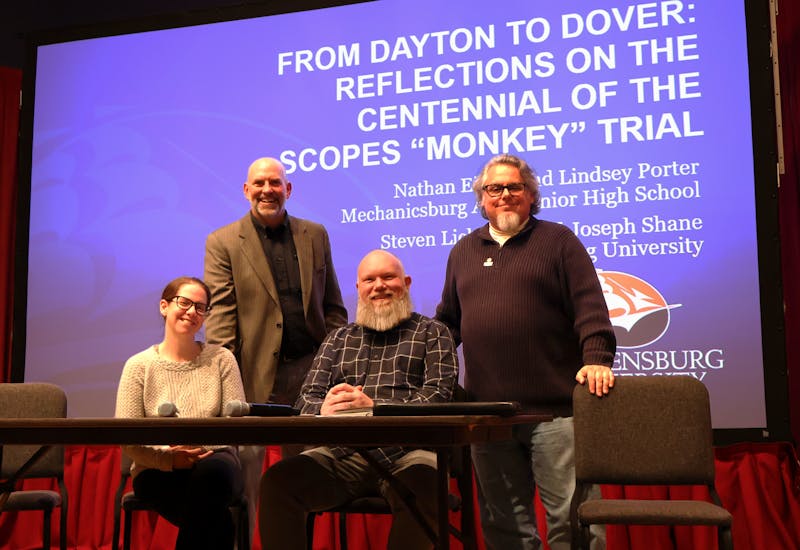Shippensburg University welcomed Theresa Runstedtler, a professor at American University as well as the author of the book “Black Ball,” on Feb. 15.
Runstedtler began her journey with the National Basketball Association in 1995 as one of the Toronto Raptors performers, which allowed her to closely observe “a lot about the racial labor dynamics of the NBA” and how it has gotten to where it is today.
She made it clear that she does not have to be a player to get an understanding of the power dynamics between corporations and their athletes, saying, “It was hard to miss the league’s unspoken racial politics” that still lingered in the 1990s.
Eventually, Runstedtler’s Raptors were sold to Maple Leaf Sports and Entertainment, after which she realized warning signs of performing for richer and oftentimes white players on the courtsides “rather than the regular and often non-white fans up in the nosebleeds.” These dynamics are what motivated Runstedtler to pursue an education of African-American history focusing on masculinity, labor and sport.
Her education in these fields and her experience with the NBA is what made “Black Ball” a success. She begins her book by describing the multitude of fights between the NBA and their Black athletes.
Runstedtler believes that the style of play in the NBA has been taken for granted. “It was still rather transgressive because of its links to poor urban Black communities, and of course the NBA as a whole owes a huge debt to this earlier generation of athletes.” She argues that it is these generations of athletes that paved the way for Black athletes’ rights in all types of sports.
These generations were the first to challenge white authority, which let them become easy targets for reinforcing negative ideas about black culture and politics, especially negative stereotypes toward African Americans and drugs during the crack-cocaine crisis. The bravery and resilience of the first generation of Black ballers creates what Runstedtler calls the “emergence of the so-called silent majority.”
In “Black Ball,” Runstedtler lists several antitrust lawsuits that Black players have launched that “challenged the monopolistic business practices of the NBA.” She took a few minutes to share the story of Haywood v. National Basketball Association, which challenged the four-year rule of the NBA.
This rule stopped Spencer Haywood and hundreds of other young players trying to join an NBA team right after high school, since the rule required four years between then and their high school graduation.
Runstedtler quoted Spencer Haywood, saying, “They pat us on the back when we win and kick us in the teeth when we lose. They just care about the score. They’re frontrunners. We’re like tenant farmers harvesting a crop for their table.”
“Black Ball” tells the story of even more players taking a stand against the owners in their own way. Either by refusing to play, show up or train since this was in the days before the ability to renegotiate your contract without free agency. “Refusing their labor was the only kind of power that they had,” Runstedtler said. According to her, athletes in the 1970s were “being treated like they were either machines or subhuman or individuals with no kind of analysis of the industry itself.”
She said Black athletes were stripped of all personal rights and only existed as public figures for the media. NBA officials called for greater control over the players labor. “They summoned long-standing racial scripts of white ownership over Black bodies as team and league officials looked ahead to the future. Many of them saw drugs through the lens of punishment rather than rehabilitation.”
In modern times, Runstedtler is happy for the NBA’s progress. “Players have enough power and enough direct unmediated access to their fans that they can often get their point of view across in a way that somebody like Spencer Haywood couldn’t,” she said.




The Slate welcomes thoughtful discussion on all of our stories, but please keep comments civil and on-topic. Read our full guidelines here.